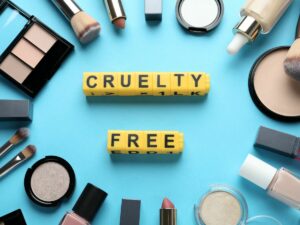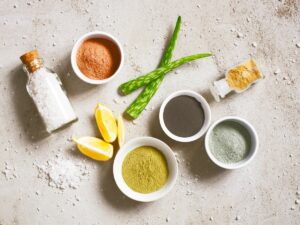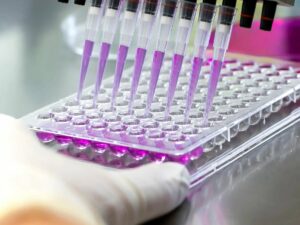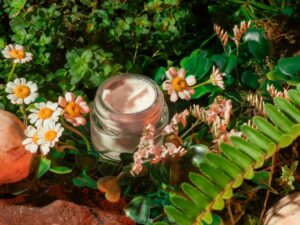Have you ever wondered about the story behind your favorite beauty products? Many products in the past relied heavily on animal testing, but the trend of “cosmetics without animal testing” is gaining momentum.
With years of experience in the beauty industry, we understand the ethical implications and market demands.
Choosing cosmetics that are free from animal testing is both an ethical decision and a brand commitment to responsible practices. This approach ensures that beauty is achieved without causing harm to animals.
In this guide, you will learn about the advantages of cruelty-free cosmetics, how to make ethical choices, and tips to transition your product line or services accordingly.
Delve in, and let’s navigate the path to ethical beauty together.
1. Understanding ‘Cruelty-Free’ Labels
In today’s beauty landscape, terms like ‘cruelty-free’, ‘ethical’, and ‘natural’ are thrown around frequently, sometimes without a deep understanding of their meanings. It’s essential to decipher these labels to ensure genuine ethical practices.
‘Cruelty-free’ specifically refers to products that haven’t been tested on animals at any stage of the production process. However, this doesn’t necessarily mean the product is vegan, as it could still contain animal-derived ingredients. Therefore, when looking for truly ethical products, it’s vital to understand the nuances and not rely solely on labels without further investigation.

2. Benefits of Switching to Cruelty-Free Products
As consumer consciousness rises, many brands are transitioning to cruelty-free practices. This switch isn’t just about ethics but offers a multitude of benefits. Let’s delve into some key advantages:
- Ethical Brand Image: By offering cruelty-free products, brands can position themselves as ethically responsible. This not only appeals to a growing segment of conscious consumers but also enhances the overall brand image and trustworthiness in the market.
- Environmental Impact: Animal testing often comes with a significant environmental cost, including habitat destruction and waste by-products. By eliminating animal testing, brands can reduce their ecological footprint and contribute to a healthier planet.

- Innovative Alternatives: With the push for cruelty-free products, there’s been a surge in innovative testing methods. In-vitro testing and computer simulations are some alternatives that are not only humane but often more accurate than traditional animal testing.
- Consumer Safety & Allergen Reduction: Cruelty-free products often lean towards natural ingredients, which can reduce the risk of allergens and adverse reactions for consumers. Natural ingredients are perceived as safer, leading to increased consumer trust and product satisfaction.

Switching to cruelty-free products can place your brand at the forefront of the beauty industry’s ethical revolution. By embracing this change, not only do you cater to evolving consumer demands, but you also pave the way for a more compassionate and sustainable future.
3. Alternatives to Animal Testing
As technology and science have advanced, several alternative methods have emerged. Below are some alternatives that are not only efficient but also align with the demands of the conscious consumer.
In Vitro Methods
In vitro testing refers to tests conducted outside a living organism, typically within a controlled environment like a test tube or petri dish. This method enables scientists to study cellular reactions to cosmetics without involving animals. Not only are these tests often faster and more cost-effective, but they also provide precise insights into how human cells might react, making it a viable and ethically superior alternative.

Computer Models
Computer modeling and simulations have made significant strides in the beauty industry. For instance, by using detailed algorithms and data sets, scientists can predict how different ingredients will interact and affect human skin or the body. This method reduces the unpredictability of tests, offers quicker results, and eliminates the need for animals entirely, marking a significant advancement in cruelty-free research.

Human Volunteers
In the evolving realm of skincare testing, patch tests and clinical trials with human volunteers are gaining notable traction. Such approaches offer a transparent window into the actual performance of products on human skin.

Nako Cosmetics, in adherence to rigorous regulations, ensures that every participant provides informed consent before engaging in these tests. By doing so, we’re able to ascertain real-world efficacy and safety of our products. This method not only guarantees the integrity of our offerings but also firmly aligns with our commitment to uphold ethical standards without compromise.
4. Labels and Certifications to Look For
The surge in demand for cruelty-free products has led to the introduction of numerous labels and certifications. Here are some of them:
- Leaping Bunny Certification: Perhaps the most recognized global certification, the Leaping Bunny Program ensures that no animal testing is conducted at any production stage. Brands with this certification have undergone rigorous checks, guaranteeing their commitment to cruelty-free practices.
- PETA’s Cruelty-Free Bunny Logo: People for the Ethical Treatment of Animals (PETA) offers its certification, symbolized by a bunny logo. Brands sporting this certification have provided assurances and proofs that they do not conduct, commission, or pay for any tests on animals.
- Choose Cruelty-Free (CCF) Logo: An Australian-based organization, CCF certifies brands that don’t test their products on animals. Their strict standards and regular checks make their certification highly sought after and trusted in the beauty industry.
| Certification/Label |
Organization |
Description |
Significance |
| Leaping Bunny Certification |
Leaping Bunny Program |
Ensures no animal testing at any production stage. Brands undergo rigorous checks. |
Recognized globally, guarantees a brand’s commitment to cruelty-free practices. |
| PETA’s Cruelty-Free Bunny Logo |
People for the Ethical Treatment of Animals (PETA) |
Brands provide assurances and proofs that they do not conduct, commission, or pay for any tests on animals. |
Reinforces a brand’s ethical standpoint and is widely recognized by consumers. |
| Choose Cruelty-Free (CCF) Logo |
Choose Cruelty-Free (Australian-based) |
Certifies brands that don’t test products on animals. Has strict standards and regular checks. |
Highly trusted in the beauty industry, especially in regions where CCF is prominent. |
As brands seek to align with evolving consumer preferences, understanding and adopting these certifications can be a game-changer. It not only reinforces the brand’s ethical standpoint but also instills trust and credibility among consumers.
5. Cruelty-Free vs. Traditional Cosmetics
As we navigate the change, it’s essential to differentiate the fundamental contrasts between cruelty-free and traditional cosmetics. Here’s why
Ingredient Sourcing
- Cruelty-Free: Prioritizes ethically sourced ingredients that have no connection to animal harm or habitats. Often leans towards natural, plant-based, or lab-created ingredients that are kind to both skin and the environment.
- Traditional: May use ingredients directly derived from animals or their by-products. These can include items like lanolin, gelatin, and certain types of collagen, which are sourced directly from animals.

Testing Methods
- Cruelty-Free: Relies on innovative methods such as in vitro testing, computer modeling, and human volunteer trials. These methods not only abstain from animal testing but also often provide more accurate results.
- Traditional: Often uses animal testing to determine product safety and efficacy. This could involve procedures that may cause discomfort, pain, or even death to the animals involved.
Environmental Impact
- Cruelty-Free: Tends to align with eco-friendly practices, focusing on sustainable ingredient sourcing, packaging, and production methods. The emphasis is on reducing the environmental footprint at every step.
- Traditional: Might not prioritize sustainability, leading to practices that can be harmful to the environment, from ingredient sourcing to wasteful packaging.

6. 4 Tips on How to Make the Switch to Cruelty-Free Products
Embarking on a journey towards cruelty-free products showcases a brand’s commitment to ethical responsibility in the beauty industry. Here’s a comprehensive guide to facilitate this transformation.
#1 Research and Educate
Recognizing the depth of what “cruelty-free” entails is more than just a surface-level comprehension—it dives deep into ingredient sourcing, production methods, and the broader implications in the beauty landscape.
Alongside this self-education, it’s crucial to align the entire team with the brand’s new direction. This alignment ensures that, from product developers to marketing teams, everyone is informed, invested, and enthusiastic about the move to cruelty-free practices.

#2 Evaluate Your Current Offerings
Before venturing into new products or reinventing the old, it’s pivotal to assess the present landscape of your product offerings. For example, determining which products already align with cruelty-free standards and which ones necessitate modifications is a logical first step.
This introspection allows brands to strategically phase out non-compliant products over a specified timeframe, ensuring a seamless transition that respects both the brand’s history and its vision for the future.
#3 Collaborate with Ethical Suppliers
Actively seeking collaborations with suppliers who resonate with the vision for cruelty-free beauty can redefine the product quality and its ethical standing. Moreover, open communication channels with these suppliers ensure that expectations are set, understood, and met, fostering a partnership rooted in transparency and shared values.

At Nako Cosmetics, the team believes in the power of partnerships to amplify our ethical commitments. By proactively aligning with suppliers who share the passion for cruelty-free beauty, the brand elevates not just the quality of our products but also their ethical resonance.
#4 Communicate with Consumers
Transitioning to cruelty-free products is as much about internal changes as it is about external communication. Brands need to articulate their journey, the steps undertaken, and the vision for the future to their consumer base. Showcasing certifications, labeling, and other markers of cruelty-free commitments can further solidify a brand’s genuine dedication to this ethical pivot.

Dive Deeper Into Our Resources
For some insightful reads, we’ve curated a list of recommended articles just for you:
Still haven’t found what you’re looking for? Don’t hesitate to contact us. We’re available around the clock to assist you.
Conclusion
In today’s changing beauty world, going cruelty-free is more than just a trend—it shows that a brand cares and is forward-thinking. Customers are now smarter about what they buy, so brands need to be honest and ethical.
Nako Cosmetics leads the way in this change. Every product we make stands for our strong values, aiming to set new beauty standards while being ethical. Now, your path to glowing beauty can also be a kind choice. Contact us today to learn more.










